Same but different? Alongside the Megatower, the Nomad X01 AXS RSV is one of the two Santa Cruz bikes in our 2023 group test. The two bikes look eerily similar on paper, and the Nomad’s mullet setup is the only visible difference. But how do they compare to each other on the trail?
For an overview of the test fleet head to the group test: The best enduro bike of 2023 – 14 models in review
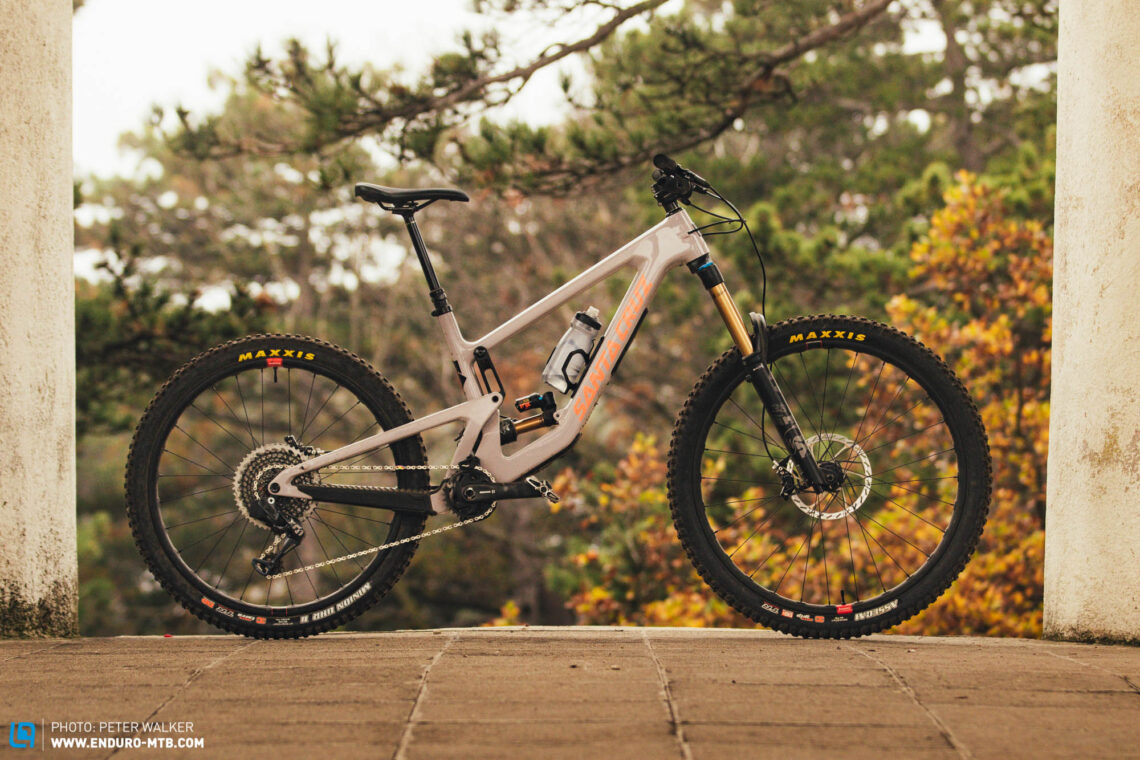
15.6 kg in size L | € 11,799 | Manufacturer’s website
The Nomad X01 AXS RSV has become a true classic and is the freeride weapon in Santa Cruz’s gravity arsenal. For 2023, the Californian manufacturer has replaced the small 27,5” front wheel of its predecessor with a bigger 29” wheel, which makes the Nomad one of only two mullet bikes in our 2023 enduro group test, alongside the Intense Tracer 279. Except for the wheel size, the Nomad has lots in common with the Megatower, which is the thoroughbred enduro racer in SC’s portfolio. The two bikes share the same front triangle and retail at € 11,799, both tipping the scales at 15.6 kg. The only difference is the rear suspension system, which generates 170 mm of travel front and rear on the Nomad – ensuring 5 mm more reserves than Santa Cruz’s enduro racer at the rear.
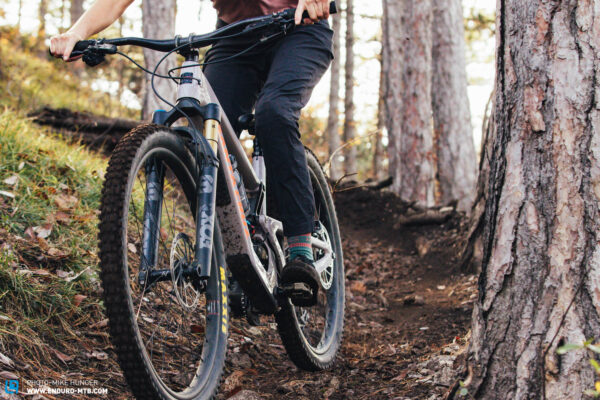
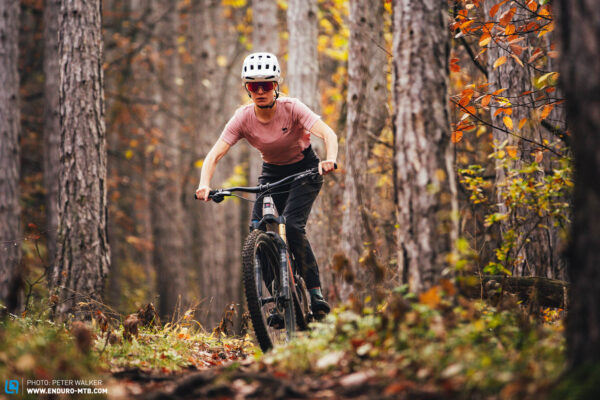
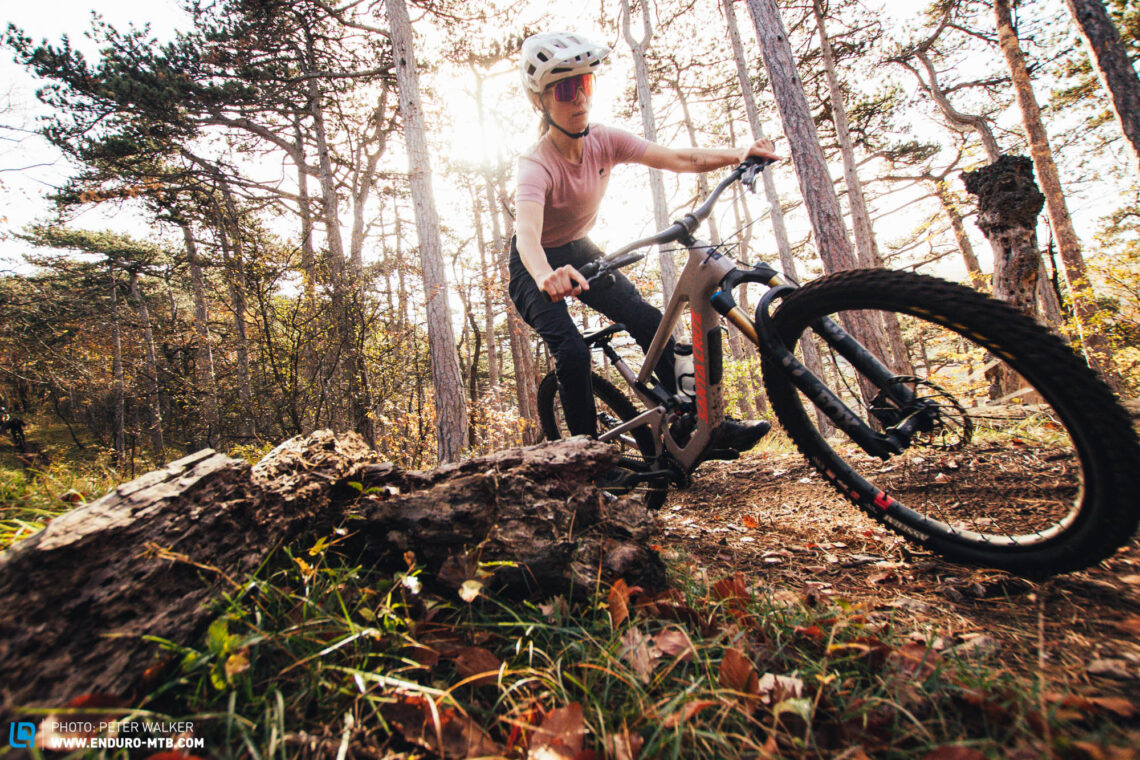
The Santa Cruz Nomad X01 AXS RSV 2023 in detail
Santa Cruz offer their carbon fibre frames in two versions, which are built using different carbon layups: the cheaper C and the high-modulus CC. The Nomad X01 AXS RSV employs the latter, which is manufactured with a larger proportion of higher-stiffness fibres, ensuring the same degree of stiffness at a lower weight compared to the cheaper C model. Like all new bikes from the Californian manufacturer, the Nomad features Santa Cruz’s proprietary Glovebox in the downtube, which has proved the best storage compartment in the entire test field with its intuitive closing system and closed bottom. Moreover the compartment comes standard with two pouches that can be used to organise items. A small fender shields the shock from flying mud and debris. The cables are clamped at the entry point in the head tube making the bike nice and quiet.
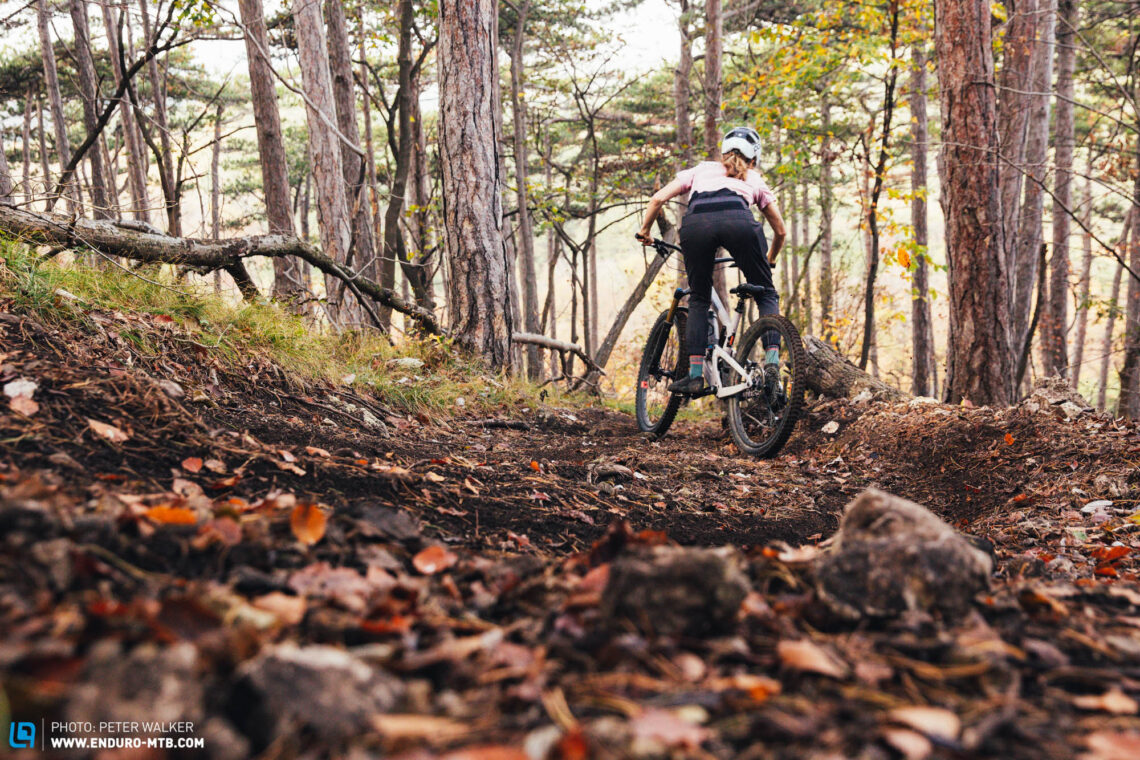
The Nomad is easy and intuitive to ride. Santa Cruz’s freeride bruiser conveys huge amounts of confidence and doesn’t require an active riding style.
The spec of the Santa Cruz Nomad X01 AXS RSV 2023
The Santa Cruz Nomad X01 AXS RSV 2023 comes equipped with FOX Factory suspension consisting of a 38 mm GRIP2 fork and an X2 air shock. RockShox supply the 175 mm Reverb dropper post, which ensures smooth operation but offers the second least travel in the entire test field, restricting freedom of movement on the trail. SRAM CODE RSC brakes with 200 mm rotors front and rear ensure powerful and reliable deceleration. Shifting is taken care of by a wireless 12-speed SRAM drivetrain consisting of an X01 AXS rear derailleur and cheaper GX paddle shifter. However, the latter only weighs 3 g more than its high-end counterpart and delivers the same excellent performance on the trail. While the 10-50 cassette has a slightly smaller gear range than other SRAM cassettes in this test, the 30 t chainring and smaller 27.5” rear wheel make up for it to a certain extent. Santa Cruz also rely on several in-house components, including the 800 mm carbon handlebars and Reserve 30|HD rims, which are laced onto Industry Nine Hydra hubs. For the tires, Santa Cruz rely on MAXXIS, combining a 29×2.5” ASSEGAI with EXO+ casing and soft MaxxGrip rubber compound at the front and a 27.5×2.4” Minion DHR II with DoubleDown casing and harder MaxxTerra rubber compound at the rear. However, an enduro bike in this league deserves robust tires with the tougher DoubleDown casing front and rear, which is the standard setup of all Nomad variants with coil shocks.
The spec of the Nomad is top notch, which shouldn’t come as a surprise given the eye-watering € 11,790 price tag – typical Santa Cruz!
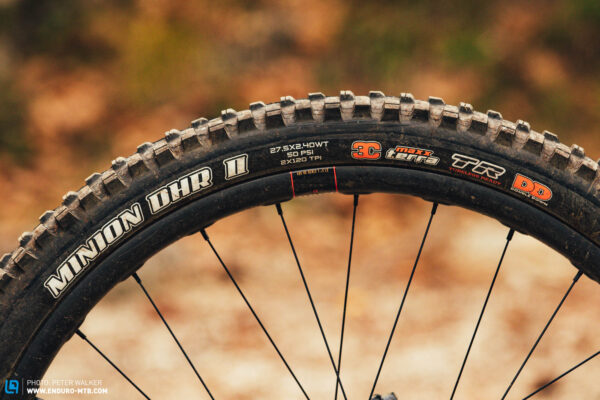
The rear 27.5” wheel of the Nomad comes standard with the puncture prone EXO+ casing and only the coil shock spec variants come equipped with robust DoubleDown tires.
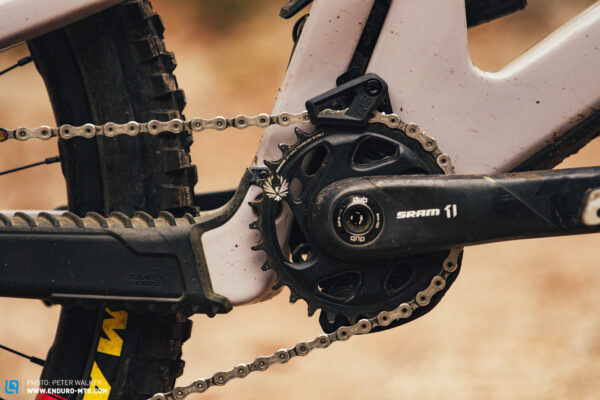
The 10- 50 cassette of the SRAM X01 Drivetrain has a smaller gear range than most other Eagle cassettes in this test. However, the smaller rear wheel and 30 t chainring make up for it, allowing you to negotiate even steeper climbs.
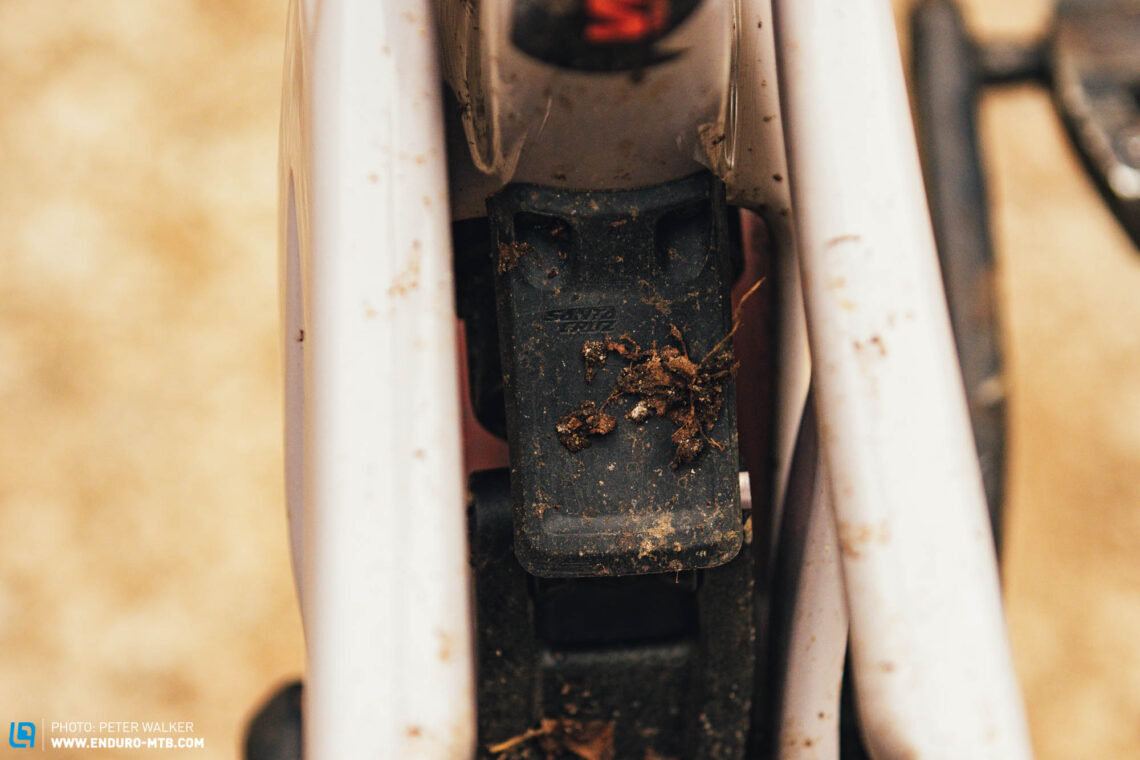
A small mudguard on the swingarm protects the shock from flying mud and debris.
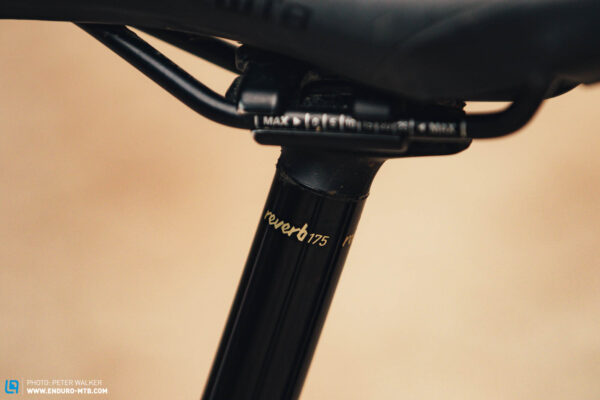
The RockShox Reverb dropper post ensures smooth operation but only offers 175 mm travel.
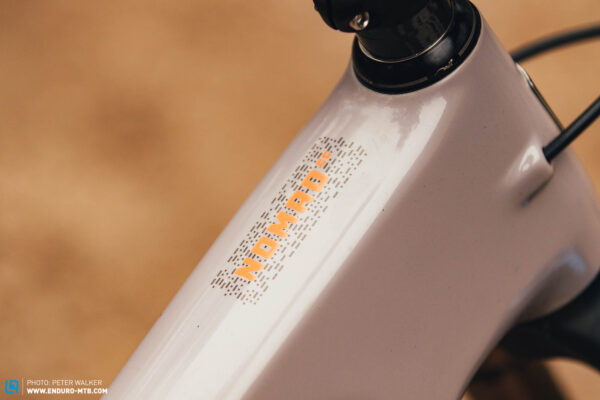
At Santa Cruz, the suffix “CC” stands for higher-quality carbon that saves weight while maintaining the same stiffness.

Santa Cruz Nomad X01 AXS RSV
Specifications
Fork FOX 38 Factory GRIP2 170 mm
Rear Shock FOX 38 Factory GRIP2 170 mm
Seatpost RockShox Reverb 175 mm
Brakes SRAM CODE RSC 200/200 mm
Drivetrain SRAM X01/GX AXS Eagle 1x12
Stem Burgtec Enduro MK3 42,5 mm
Handlebar Santa Cruz Carbon 800 mm
Wheelset Reserve 30IHD 29"/27.5"
Tires MAXXIS ASSEGAI, EXO+, 3C MaxxGrip/MAXXIS Minion DHR II, Doubledown, 3C MaxxTerra 2.5/2.4
Technical Data
Size S M L XL XXL
Weight 15.6 kg
Specific Features
storage compartment
Flip-Chip
The geometry of the Santa Cruz Nomad X01 AXS RSV 2023
Santa Cruz offer the Nomad in a total of 5 sizes, S to XXL. As already mentioned, the Nomad and Megatower share the same front triangle and thus near-identical geometries. Our test bike in size L combines 472 mm reach and a relatively short 430 mm seat tube, but unfortunately the short-travel dropper post prevents you from taking full advantage of the latter. A flip chip in the shock mount allows you to adjust the reach and head angle of the bike, albeit only slightly. As usual, we rode the bike mainly in the low setting. Moreover, the Nomad features longer chainstays than the Megatower, which are 444 mm in size L and grow with the frame size, providing consistent handling across all frame sizes.
| Size | S | M | L | XL | XXL |
|---|---|---|---|---|---|
| Seat tube | 380 mm | 405 mm | 430 mm | 460 mm | 500 mm |
| Top tube | 570 mm | 594 mm | 612 mm | 637 mm | 666 mm |
| Head tube | 90 mm | 100 mm | 115 mm | 135 mm | 150 mm |
| Head angle | 63.8° | 63.8° | 63.8° | 63.8° | 63.8° |
| Seat angle | 77.2° | 77.4° | 77.9° | 77.8° | 77.7° |
| Chainstay | 439 mm | 440 mm | 443 mm | 446 mm | 450 mm |
| BB Drop | 27 mm | 27 mm | 27 mm | 27 mm | 27 mm |
| Wheelbase | 1,209 mm | 1,239 mm | 1,269 mm | 1,301 mm | 1,336 mm |
| Reach | 430 mm | 455 mm | 475 mm | 495 mm | 520 mm |
| Stack | 618 mm | 625 mm | 638 mm | 656 mm | 670 mm |
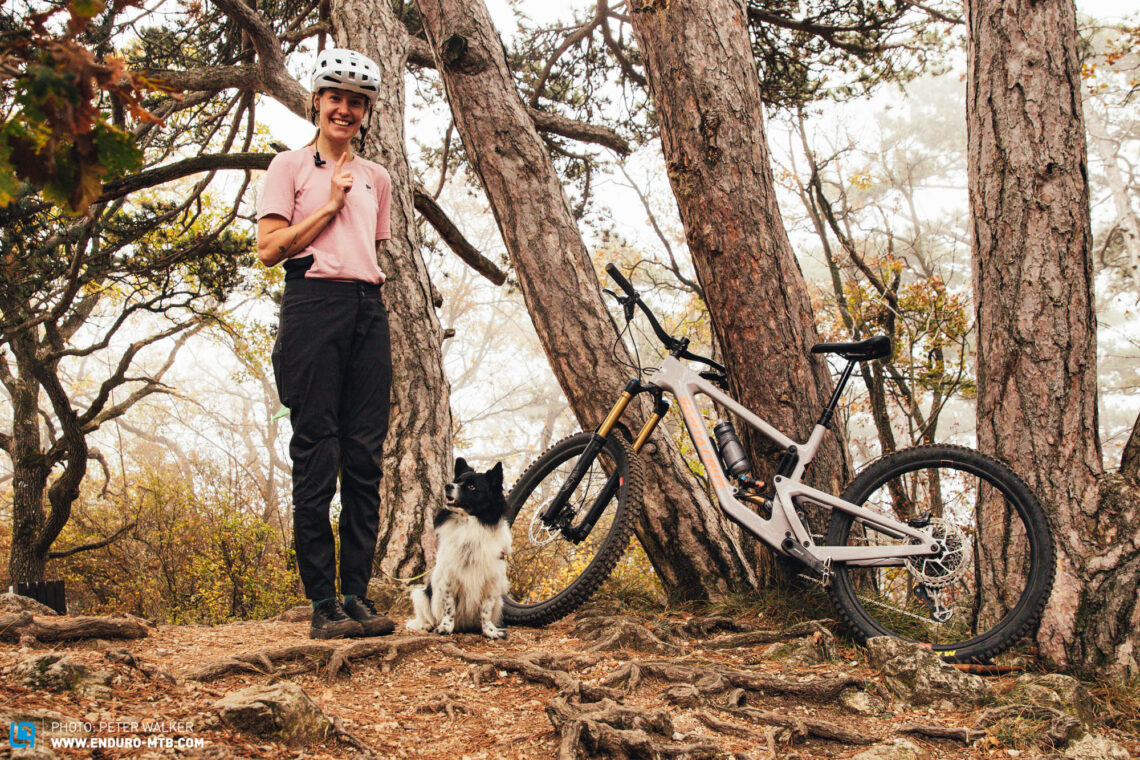
The Santa Cruz Nomad X01 AXS RSV 2023 on the trail
Riding uphill, the Santa Cruz Nomad X01 AXS RSV positions you in a central and comfortable pedalling position, without putting pressure on your hands. However, the rear suspension bobs noticeably when pedalling, making the Nomad one of the weakest climbers in the entire test field. Overall, the Nomad delivers a similar climbing performance as the Deviate Claymore and struggles to keep up with the Megatower uphill, which has a similar pedalling position but is significantly stiffer and far more efficient.

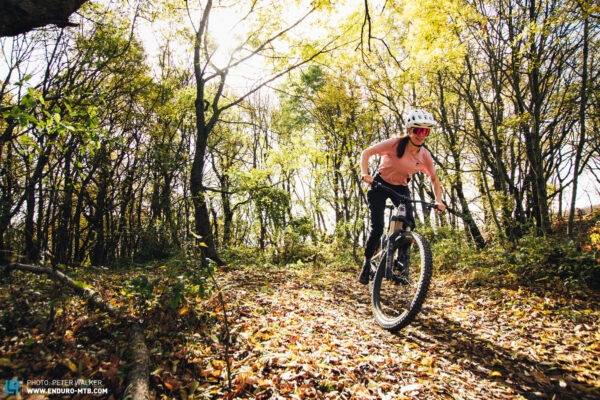
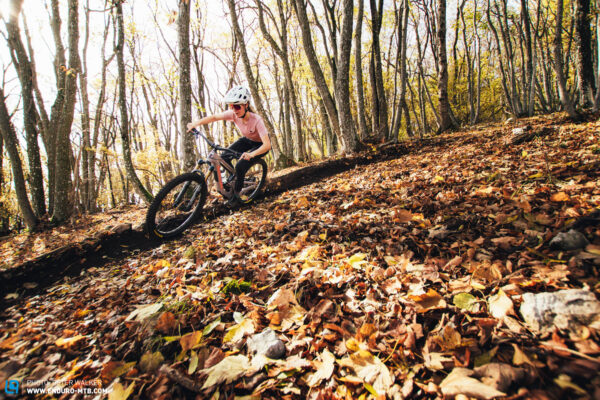

The plush rear suspension lacks support, making it harder to pull off ledges and generate speed through rollers and berms.
On steep descents, the Nomad inspires huge amounts of confidence, which is partly due to the high front end, small rear wheel and the suspension, where the latter generates tons of traction.
When gravity takes over, the first thing you’ll notice is the high front end. The Nomad integrates you deep into the frame and prevents you from going over the bars in steep sections. On moderate trails, you’ll have to actively weight the front wheel to keep it tracking. While the two Santa Cruz bikes in this test share the same identical stack height, the front end of the Nomad feels significantly taller, which, in combination with the small rear wheel, leaves plenty of room above the rear wheel, ensuring excellent freedom of movement on gnarly and steep tech. On top of that, Santa Cruz’s freeride bruiser is nimbler than its sibling, and a little more intuitive too! That being said, the plush rear suspension comes at the expense of liveliness and provides little feedback from the ground, sinking into its travel more easily with big compressions and requiring more physical effort to pull off ledges and pump through rollers. On the plus side, the Nomad is extremely composed and generates good traction when you slam on the brakes in bumpy trail sections, thus enabling a more passive riding style – which the Megatower doesn’t tolerate! All in all, the Nomad inspires huge amounts of confidence but can’t fully unfold its all-round qualities.
Tuning tips: Tires with more robust casing

Conclusion
Although similar on paper, the two Santa Cruz bikes are two entirely different beasts. The Nomad is more intuitive to ride and shines with its small rear wheel and plush, grippy suspension, especially on steep terrain. On the other hand, Santa Cruz’s freeride weapon generates less traction and doesn’t provide as much feedback from the ground. Overall, the Nomad inspires huge amounts of confidence, which makes it a particularly attractive option for riders who spend lots of time on steep terrain and aren’t too fussed about securing KOMs on Strava.
Tops
- Storage compartment implemented extremely well
- Inspires huge amounts of confidence
- Suspension is composed and generates tons of traction
Flops
- Tires don’t do justice to the potential and character of the bike
- Short travel dropper post restricts freedom of movement
You can find out more about at santacruzbicycles.com
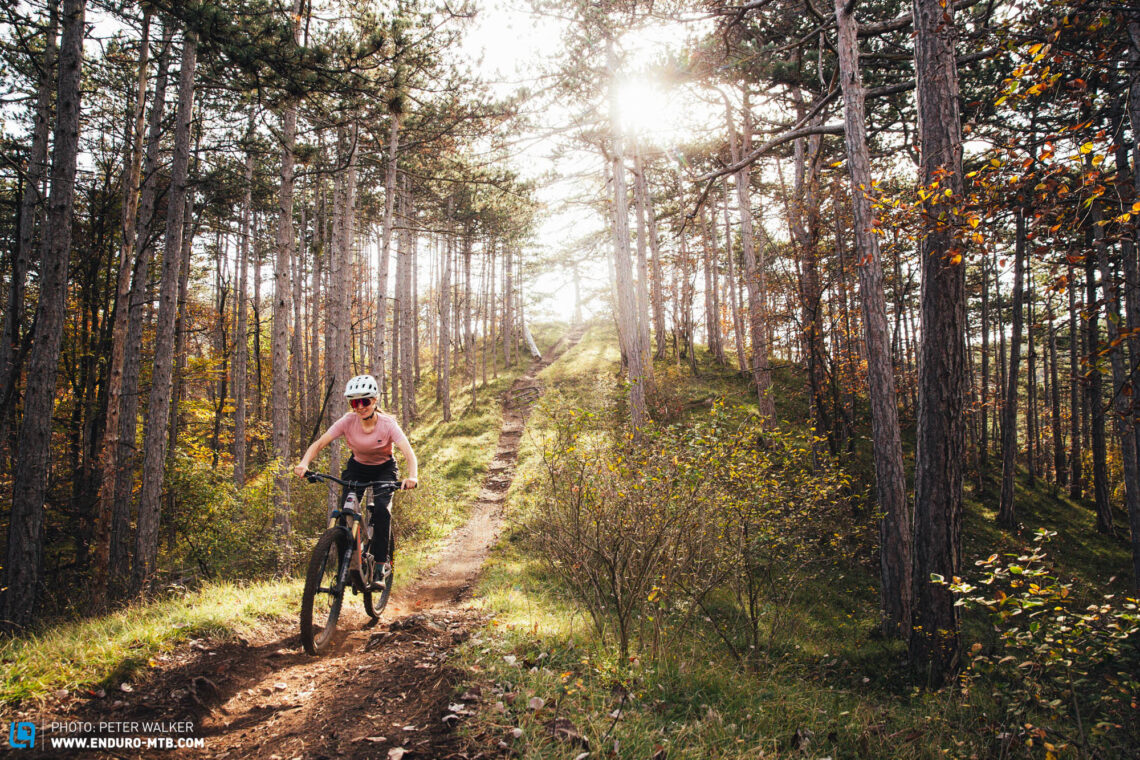
The test field
For an overview of the test fleet head to the group test: The best enduro bike of 2023 – 14 models in review
All bikes in test: Canyon Strive CFR 8 (Click for review) | Deviate Claymore (Click for review) | Hope HB916 (Click for review) | Intense Tracer 279 S (Click for review) | MERIDA ONE-SIXTY 8000 (Click for review) | Mondraker Carbon Foxy RR (Click for review) | Norco Range C1 (Click for review) | Santa Cruz Megatower X01 AXS RSV (Click for review) | Santa Cruz Nomad X01 AXS RSV | SIMPLON Rapcon 170/165 (Click for review) | SIMPLON Rapcon Pmax TQ 170/165 (Click for review) | Specialized Stumpjumper EVO Elite Alloy (Click for review) | Yeti 160E T1 (Click for review) | Yeti SB160 T3 (Click for review)
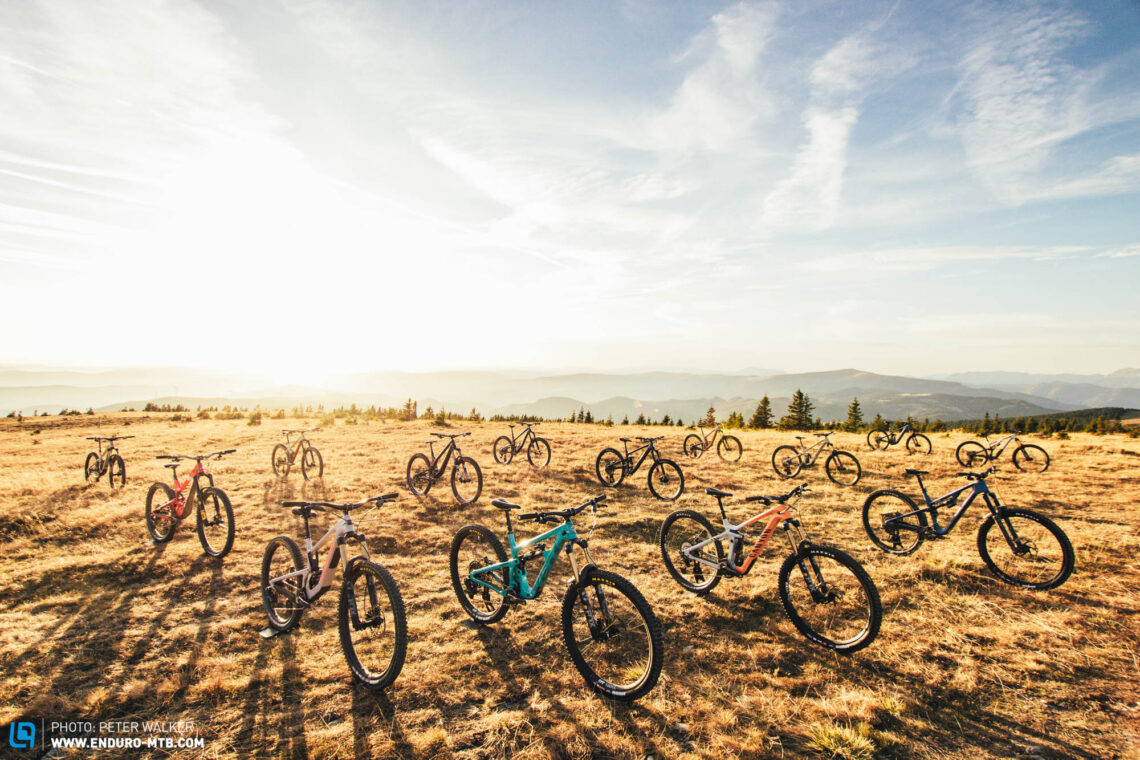
Did you enjoy this article? If so, we would be stoked if you decide to support us with a monthly contribution. By becoming a supporter of ENDURO, you will help secure a sustainable future for high-quality mountain bike journalism. Click here to learn more.
Words: Simon Kohler Photos: Peter Walker, Mike Hunger









